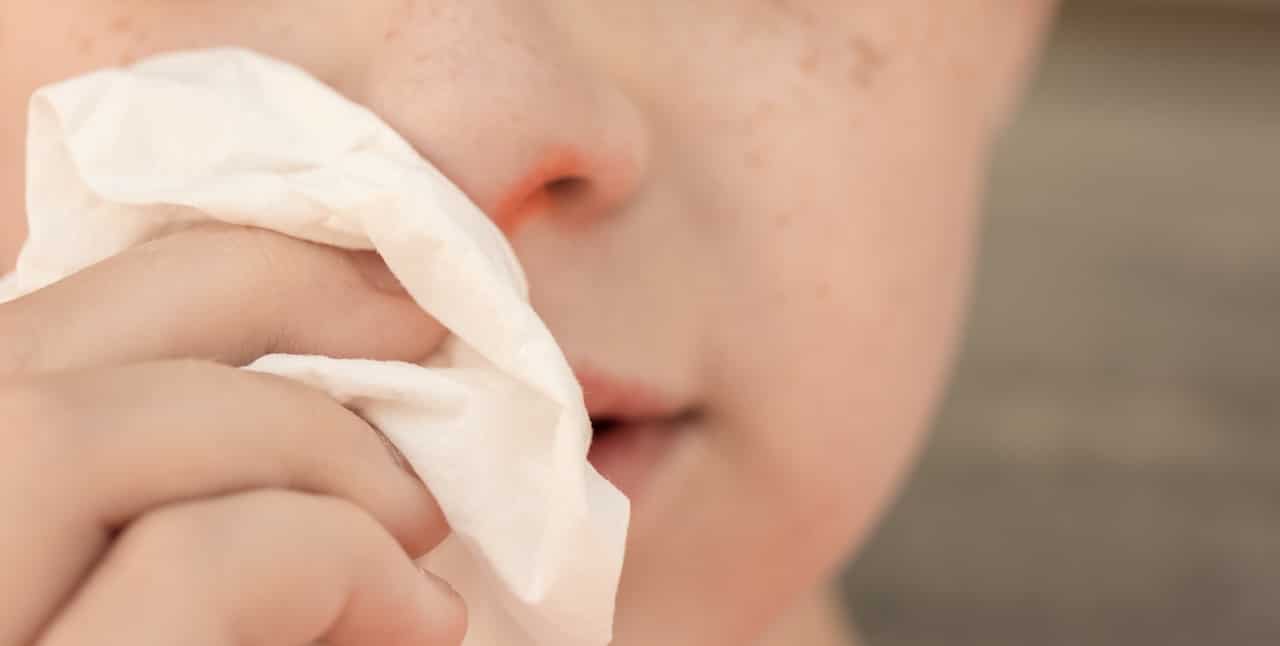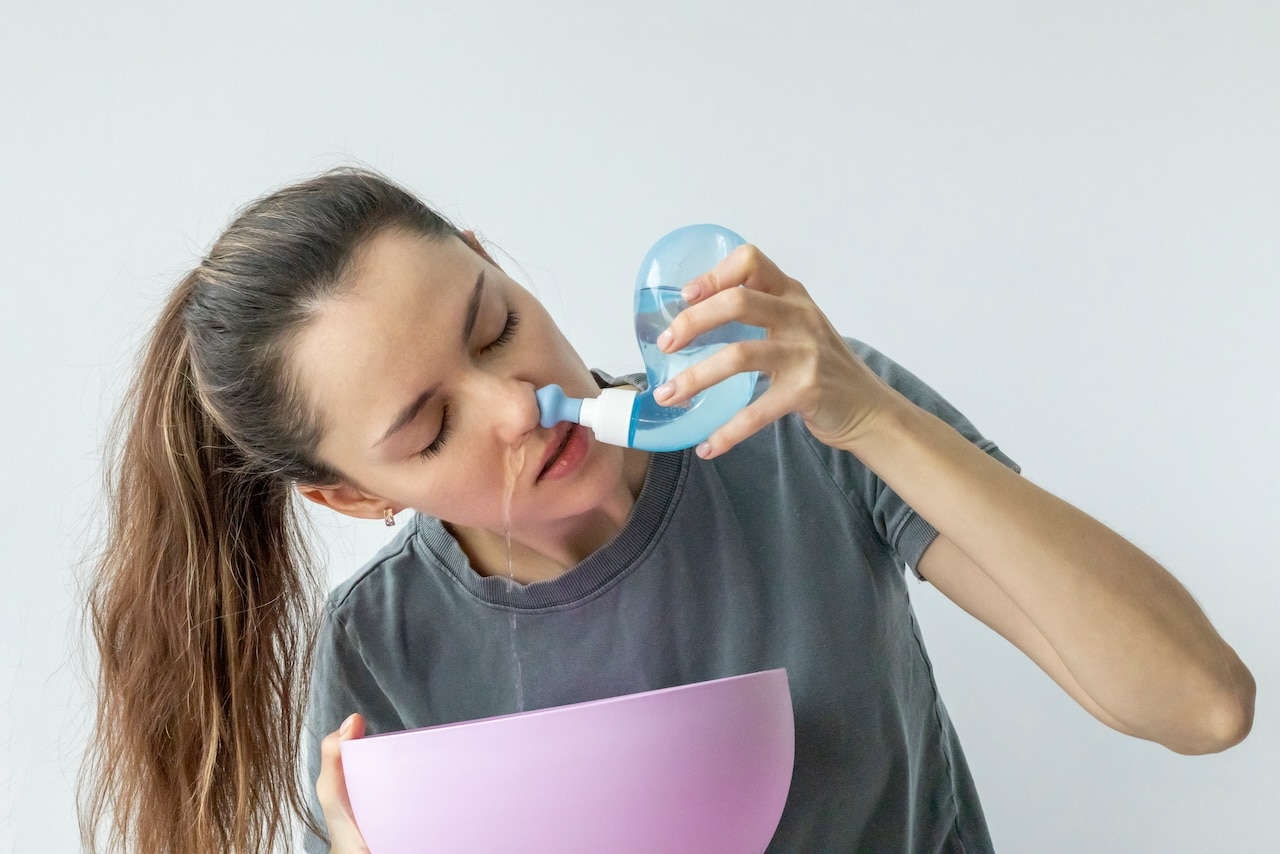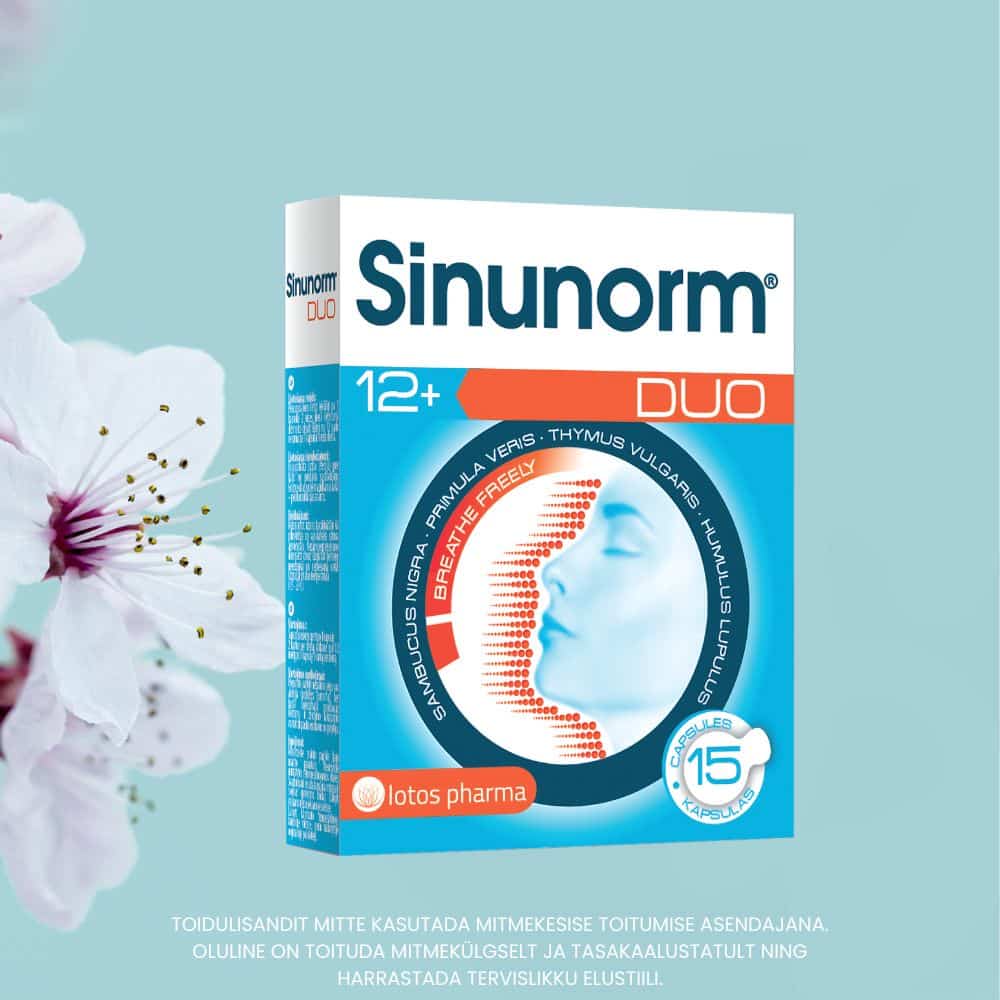A runny nose is most annoying when it blocks the nose so that it is no longer possible to breathe through it. And sleeping with a stuffy nose is pure torture! In addition, it often does not help to sniff the nose – for the simple reason that the snot does not come out at all. So what to do about it?
How does a stuffy nose happen?
The medical term for a stuffy nose is “rhinitis,” which means inflammation of the mucous membranes inside the nose and copious secretion of nasal mucus. It is most often caused by allergies and viral infections, but there is also non-allergic rhinitis, which can be triggered by various factors: food or alcohol, medications, various irritants in the air (smoke, dust, chemical fumes, perfumes, etc.), changes in air temperature or humidity, increased stress levels , nasal polyps, hormonal changes in the body, digestive disorders, etc
When a person breathes an allergen (viruses, bacteria, or any other allergen) into their nasal passages, the mast cells release the chemical histamine, which then causes inflammation. We usually feel that the discomfort is caused by mucus, but breathing difficulties are mainly due to the swelling of blood vessels in the nose. We try to blow our nose over and over again to get the snot out when the real problem is the swelling. Blowing your nose is helpful, but if nothing comes out, it usually means there isn’t much mucus.

Why sniffing your nose is not good
When our nose senses a real or perceived threat, such as a cold virus, cold air, or an irritant, it can trigger a rapid release of nasal secretions to “trap” the intruder in the snot and then flush it out of the nose. In this case, it is best to blow your nose instead of sniffing to avoid getting something harmful deeper into your airways. True, a healthy person swallows about one and a half liters of nasal secretions per day (yes, and we don’t even notice it!), this is normal, so inhaling and eating them is not harmful. Gastric juices will neutralize any pathogen without any problems.
On the other hand, repeated and forceful blowing of the nose can create pressure high enough to force mucus into the sinuses, which could be a factor in chronic sinusitis (inflammation of the lining of the sinuses). You should blow your nose – each nostril separately – easily and gently, then it will be safe.
If a person blows out with all their might, other medical problems can occur, although these are rare.
* Nosebleeds. The task of the nose is to moisten and warm the air. When the temperature drops, the absolute humidity also drops and the nose dries out. In a dry nose, the mucous membrane of the nasal cavity dries up and blood vessels protrude to the surface. If a blood vessel is exposed to dry air and, in addition, to the pressure of blowing the nose, congestion of the blood vessel can cause a nosebleed. The good news is that this type of nosebleed usually stops on its own and does not require medical attention.
* Ear infection. Since the nasal cavity and ears are connected by the Eustachian tube, there is a chance that some bacteria can be blown from the nose into the ear, causing an infection. This is really rare. Usually, the main reason people get ear infections during a cold is the lack of ventilation in the ear. Nasal swelling closes the connection between the ear and the nose. Fluid can build up in the ear, leading to an infection.
*Tympanic membrane rupture. If the nose is significantly blocked and the person sniffs very hard, the pressure may suddenly build up high enough to create a hole in the eardrum. But it is not very common.
* Cough headache. A cough headache is a type of headache caused by coughing and other exertion, including sneezing, blowing your nose, laughing, crying, singing, bending over, or defecating. They come on suddenly and only immediately after coughing or straining and usually last a few seconds or minutes, although they can persist for up to a couple of hours. It is a sharp, stabbing, splitting or “bursting” pain, usually affecting both sides of the head and may be worse in the back of the head.

Benefits of nasal irrigation
To make it easier to blow your nose, it is important to maintain good hydration by drinking a lot of water, warm tea, taking a warm shower, breathing in steam, etc. Since ancient times, people have also practiced rinsing the nose with salt water, which is one of the most effective ways to free the nasal passages and ease breathing. Today, both special nasal rinses and rinsing solutions are available, but it can also be done at home.
If you’ve never done this before, the process can sound complicated. But the benefits and relief are worth it, as flushing the sinuses and nasal passages relieves symptoms of infections, allergies, colds and flu. In patients with chronic sinus problems, daily nasal irrigation was found to reduce the severity of symptoms by more than half. When the saline solution is rinsed through the nasal passages, both liquid mucus and dust, pollen or other debris are removed, the mucous membrane of the passages is moistened, and the thick snot is “decalcified” so that it can be easily sniffed out.
How to do a nasal rinse
There are some safety precautions to follow when doing nasal irrigation at home. First you need a simple rinsing device and a saline solution, which can be purchased at the pharmacy as a kit, or you can prepare the solution yourself. Doctors recommend the following mixture: mix three teaspoons of salt without iodine with one teaspoon of soda – take one teaspoon of the mixture per glass of water.
It is very important not to use water directly from the tap as it may contain bacteria. If by swallowing such water, they die in the stomach, then by rinsing the nose, they continue to live and can cause infection (in rare cases, even reach the brain). Therefore, only boiled, distilled or filtered water should be used for rinsing.
Nasal rinsing is performed over the sink or bathtub step by step:
1) fill the device with salt solution ;
2) turns the head sideways to the left;
3) gently pour or push the solution into the right nostril – it will flow out the left nostril;
4) repeat the same with the other nostril;
5) gently blow out the remaining water and mucus from the nose.
If nasal irrigation is done correctly, side effects, if any, are usually minor and short-lived. The most common may be a burning or stinging sensation in the nose and mild irritation in the nasal passages. Saline solution, unlike pure water, is not as irritating to sensitive nasal membranes.
In any case, nasal irrigation is started with only one procedure per day. If rinsing helps, this can be increased to three times a day. However, nasal irrigation should not be used as a preventive measure in the absence of symptoms. It will not prevent sinus problems and can develop infections. The sinuses and nasal passages are lined with good mucus – it traps irritants and bacteria that enter the nostrils and can kill some bacteria. Regular rinsing can inhibit these protective functions and increase the risk of infection.

Remedies for relief of runny nose
If there is no desire to perform nasal irrigation procedures, pharmacies offer a wide range of nasal drops or sprays that reduce swelling of the nasal mucosa, quickly relieve a blocked nose, and make breathing easier. If the products contain chemicals such as xylometazoline, which constrict blood vessels to make breathing easier, they should be used for no longer than six to seven days.
Another group of remedies for runny noses are herbal tablets or syrups. SINUNORM DUO, a product containing natural plant extracts developed by the Latvian pharmaceutical company Lotos Pharma, is distinguished by the fact that it acts simultaneously on both the upper (nose and its sinuses) and lower (bronchi) respiratory tracts, as well as ensures optimal health of the respiratory tract and promotes normal functioning of the immune system. The thyme extract contained in the composition has antibacterial activity, while the elder flower extract and the pansy flower extract ensure optimal respiratory function. The combination of vitamin C with zinc in acerola fruit extract contributes to the normal functioning of the immune system. Method of use: adults take 1 capsule 2 times a day (recommended daily dose), children over 12 years old – 1 capsule 1 time a day.
Sinunorm Duo will be available in our e-store from August 2024.

